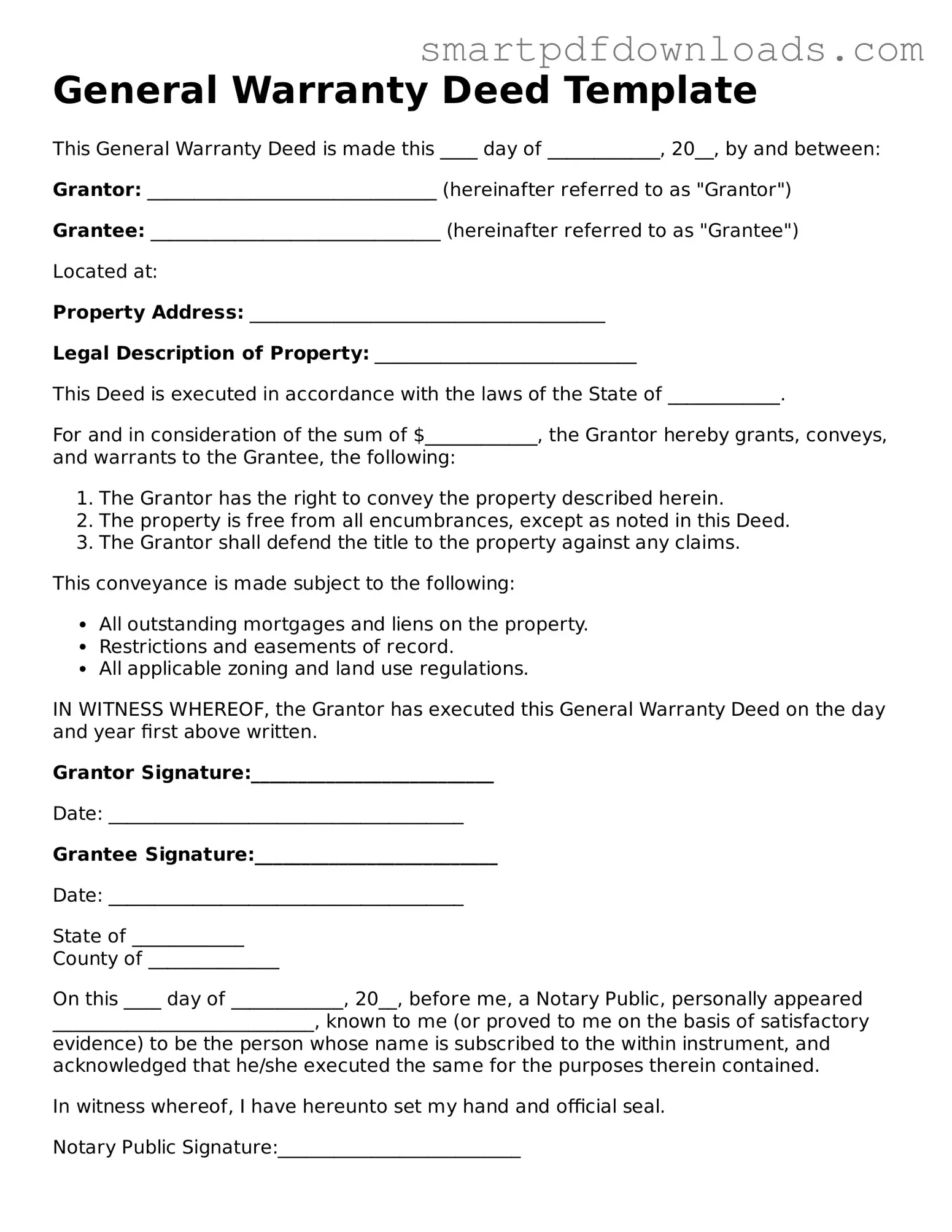General Warranty Deed Template
This General Warranty Deed is made this ____ day of ____________, 20__, by and between:
Grantor: _______________________________ (hereinafter referred to as "Grantor")
Grantee: _______________________________ (hereinafter referred to as "Grantee")
Located at:
Property Address: ______________________________________
Legal Description of Property: ____________________________
This Deed is executed in accordance with the laws of the State of ____________.
For and in consideration of the sum of $____________, the Grantor hereby grants, conveys, and warrants to the Grantee, the following:
- The Grantor has the right to convey the property described herein.
- The property is free from all encumbrances, except as noted in this Deed.
- The Grantor shall defend the title to the property against any claims.
This conveyance is made subject to the following:
- All outstanding mortgages and liens on the property.
- Restrictions and easements of record.
- All applicable zoning and land use regulations.
IN WITNESS WHEREOF, the Grantor has executed this General Warranty Deed on the day and year first above written.
Grantor Signature:__________________________
Date: ______________________________________
Grantee Signature:__________________________
Date: ______________________________________
State of ____________
County of ______________
On this ____ day of ____________, 20__, before me, a Notary Public, personally appeared ____________________________, known to me (or proved to me on the basis of satisfactory evidence) to be the person whose name is subscribed to the within instrument, and acknowledged that he/she executed the same for the purposes therein contained.
In witness whereof, I have hereunto set my hand and official seal.
Notary Public Signature:__________________________
My Commission Expires: ________________________
